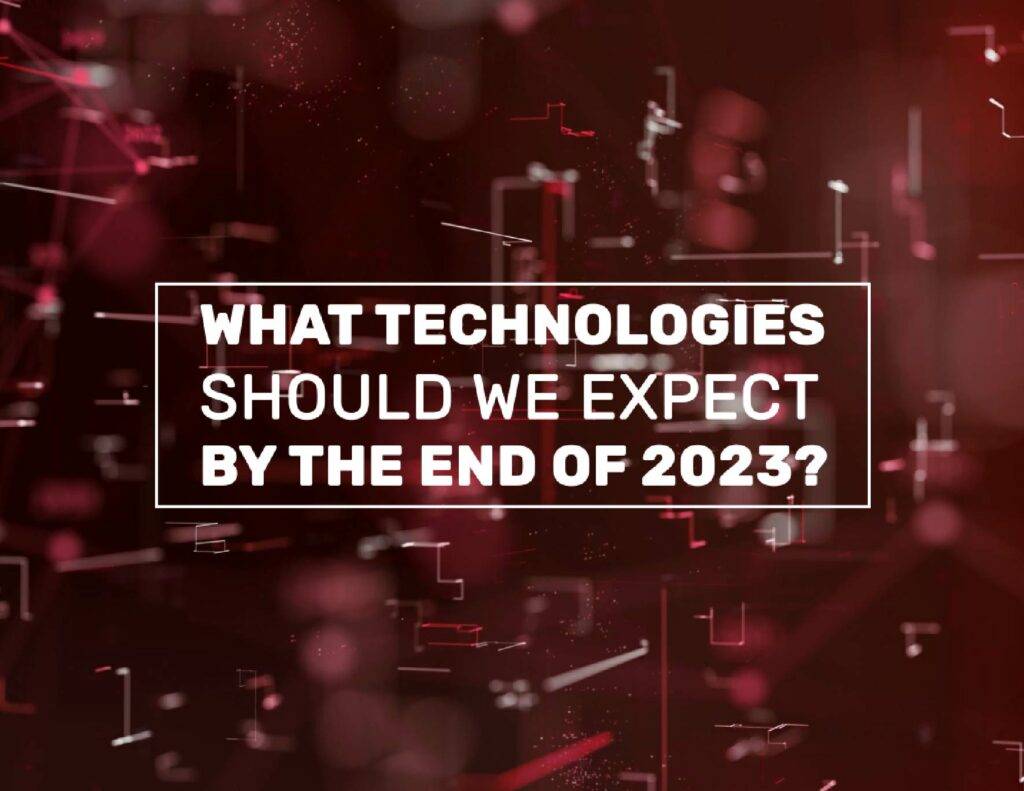In 2020 we lived through the greatest digital acceleration in history, and in 2022 came a new digital revolution with web 3.0. What will 2023 bring? The speed of change has caused the pace of technology adoption to accelerate dramatically. Here are some examples of what this year will bring us regarding technology and innovation.
Neural synaptic connection
Neuralink Corporation is an American neurotechnology company specializing in developing implantable brain-computer interfaces, also known as Brain-Machine Interfaces or BMI, founded by Elon Musk. This recent company seeks to connect our minds with AI to help people with brain injuries. Neuralink tries to solve brain damage by creating an interface for the entirety of it that connects biological intelligence with AI.
At the same time, this initiative is setting the course for the future of brain interfaces. Among the devices, we will find some that will help people with paralysis, expanding skills, or even social relationships. This dynamic will change the world.
This company is already testing the neural synaptic connection, and this means that we can eat a burger in the metaverse or feel anything: the wind, pleasure, and smells. The technology is already in an experimental phase, and the applications it may have will be a matter of thinking about them.
Clones or Digital Twins
Having a replica in the metaverse or digital to perform all the tests you want without any risk already exists. Still, it will be 2023, the year in which we will see the development of this technology that has already been used intensively in Formula 1.
Simply put, a digital twin is a virtual replica of a product, process, or physical system. Digital twins are the link between the physical and digital worlds, using sensors to collect real-time data on a physical element.
The collected data creates a digital duplicate of the object, allowing it to be understood, analyzed, manipulated, and optimized. Digital twin technology simulates results, improves performance, or predicts and analyzes reactions to certain stimuli.
Digital twins are closely linked to IoT devices. Thanks to the significant proliferation of these devices, these simulations of the physical world can be created much more reliably. At the same time, digital twins serve to optimize and improve the operation of these devices.
These are some examples:
Thanks to a digital twin, we can, for example, design a vehicle engine, jet engine, or turbine and test them digitally before physically creating them. Simultaneously, a hospital can be digitally cloned, and hospital administrators, doctors, and nurses can get valuable real-time information about patients’ health and workflows.
Some smart cities already use digital twin technology. Applications include traffic control, urban planning, and the planning and control of mobile grid towers and solar panels.
AI increasingly reliable
There is already AI in Google, Waze, Smart Grids, or the last big bang of the year of OpenAI with ChatGPT, which is nothing shocking or new, but it will be a before and an after because it demonstrates where we are. The new electricity of our lives is AI and will help us to improve our lives, as in its day happened with the arrival of electricity.
AI is a set of numerous technologies capable of solving increasingly complex problems. For example, some technologies with significant influence on the development of formative intelligence in 2023 will be AI-assisted design, increased development of AI, ontologies and graphics, «small data», composite AI, and generative AI, among others.
Intelligent robotics
Robotics combined with AI and machine learning. Its capacity to destroy employment is massive so that we may live the first strikes and anti-robot demonstrations in this decade. Cobots commonly called “Collaborative robots,” are expected to constitute 34% of overall robot sales by the end of 2025. But they have come to do the physical or risky work that we do not want or can do and can be if properly applied, the tool towards a world of abundance and contemplation for the human being.
RPA
Process Robotic Automation, or RPA, is a technology that allows you to automate tasks in different business areas and help workers focus on activities that generate value for the company.
It works by creating bots configured under a set of rules. The RPA allows, through Machine Learning, the robot to observe the actions that the human performs to create a predictive process that leads to the imitation and execution of these tasks. This technology is compatible with any application or system.
The goal of RPA is to transfer process execution from humans to robots, and it interacts with existing IT architecture without the need for complex system integration.
Automating repetitive tasks or processes using software is nothing new; what will be new is that AI is integrated into this software to make it faster and better than people, learning from the environment and the wide variety of applications that will appear.
Web 3.0 is widespread
Web 3.0 is the third generation of Internet services for web pages and applications. It will use machine-based data understanding to provide a semantic and datified Web. According to statistics, the global Web 3.0 blockchain market size was USD 1.73 billion in 2022 and is expected to expand at a compound annual growth rate (CAGR) of 47.1% from 2023 to 2030.
The ultimate goal of Web 3.0 is to create smarter, more connected, and more open sites using technologies such as Blockchain, AI, or Metaverses to enhance the experience and amplify it.
Implementing technologies like virtual reality, augmented reality, NFTs, DeFi, blockchain, and more, will make us change how we browse the Internet. For that reason, websites will be transformed, creating an excellent opportunity for new entrepreneurs who find how to improve what already exists. Training on Web 3.0, Metaverses, and NFTs will also be a great opportunity during this year for professionals.


